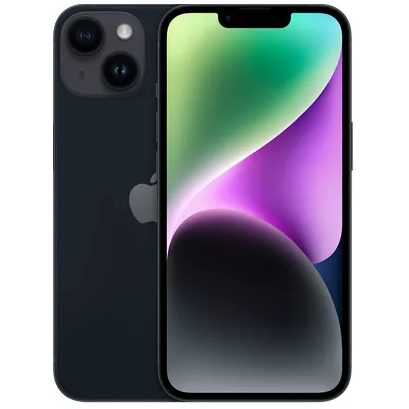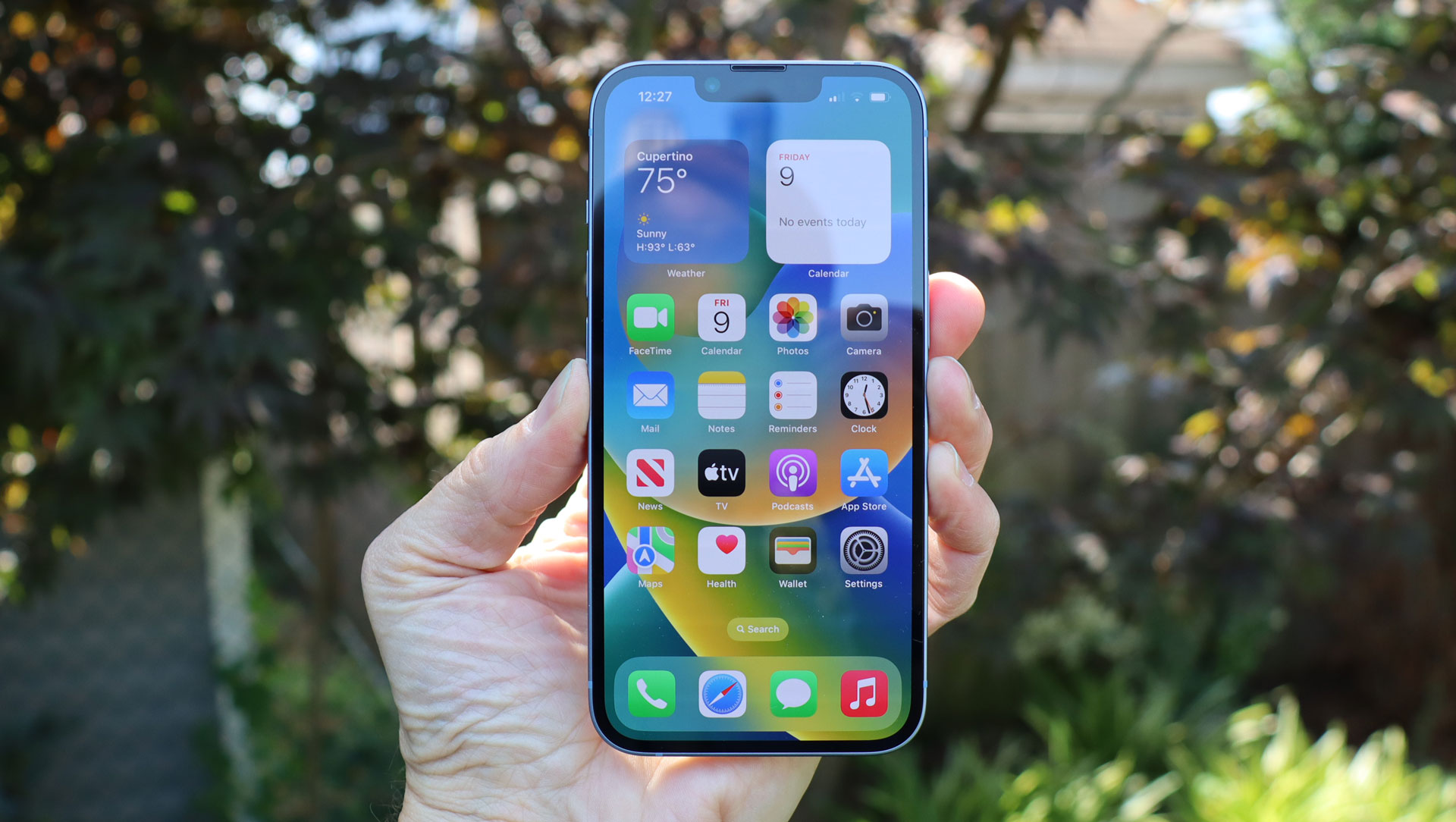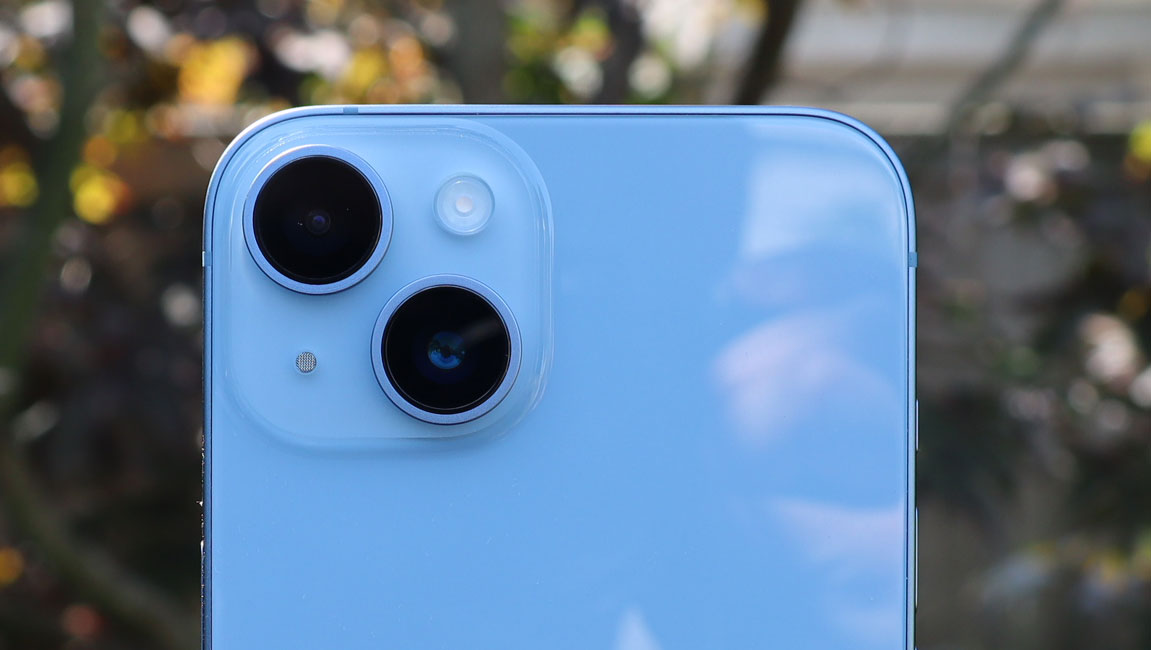iPhone 14 vs iPhone 13: which should you buy?
What are the differences between the iPhone 14 and iPhone 13 - and which is best?

Apple's latest iPhone is a minor upgrade over the previous generation, with most of the big changes reserved for the Pro models. But it is still an upgrade: the cameras are slightly improved particularly round the front, while it performed faster than the iPhone 13 in our tests. We wouldn't recommend upgrading from the 13 to 14, but if you're on an older model it's a fine choice that won't let you down.
Pros
- Slightly faster performance
- Better TrueDepth camera
- Emergency satellite communications
Cons
- The notch remains
- Last generation A15 Bionic chip
- Mostly minor upgrade

The iPhone 13 enjoyed some substantial improvements over the iPhone 12 range, including a smaller notch, new video mode and super-fast A15 Bionic chipset. But the iPhone 14 has all of those too, plus a bit more besides. The main factor in its favor is its price - $100 / £100 / AU$170 less than the newer model. If you can live without the 14's minor upgrades and don't need a Pro model, it's a better buy.
Pros
- Cheaper than the iPhone 14
- Identical design
- Plenty of power
Cons
- Slightly smaller battery
- No autofocus on front camera
- 4-core GPU
If you're searching for iPhone 14 vs iPhone 13 differences then you'll need to look closely - because on the face of it, the latest generation is not a huge upgrade.
Look beneath the surface, though, and there are changes - including some in key areas such as the cameras and processor. Are they enough to make the iPhone 14 a better buy for you than the iPhone 13? That will depend on your specific needs and also on your budget, because the iPhone 13 is available for $100 / £100 / AU$170 less than the newer model.
Below, we'll outline all of the differences (and similarities) between the two phones so you can decide which one deserves a place in your hand.
iPhone 14 vs iPhone 13: price and availability
The iPhone 13 started at $799 / £779 / AU$1,349 when it launched in late 2021, but as is so often the case, it received a welcome price cut once the iPhone 14 arrived.
Both the iPhone 13 and iPhone 14 can be had with the same 128GB, 256GB or 512GB storage options, with the iPhone 13 now starting at $699 / £749 / AU$1,229, while the iPhone 14 starts at $799 / £849 / AU$1,399.
The eagle-eyed amongst you will also notice that, although the iPhone 14 doesn't cost any more than its predecessor did when it first launched in the US (yay!) customers in other markets including the UK and Australia are getting charged more for the equivalent iPhone one year on (boo!).
The iPhone 14 range was announced on September 7, with pre-orders kicking off from September 9 and on-sale availability from September 16.
Sign up for breaking news, reviews, opinion, top tech deals, and more.
Those keen to get their hands on the base iPhone should check out our rundown of iPhone 14 deals to get the best value.
Apple iPhone 14 vs iPhone 13: specs
| iPhone 14 | iPhone 13 | |
|---|---|---|
| Dimensions: | 71.5 x 146.7 x 7.8mm | 71.5 x 146.7 x 7.7 mm |
| Weight: | 172g | 174g |
| Screen: | 6.1-inch Super XDR OLED | 6.1-inch Super XDR OLED |
| Resolution: | 2532 x 1170 pixels | 2532 x 1170 pixels |
| Refresh rate | 60Hz | 60Hz |
| CPU: | A15 Bionic (5-core GPU) | A15 Bionic (4-core GPU) |
| RAM: | 6GB | 4GB |
| Storage: | 128GB / 256GB / 512GB | 128GB / 256GB / 512GB |
| OS: | iOS 16 | iOS 15 at launch, iOS 16 available now |
| Rear Cameras: | 12MP main (26mm, f/1.5), 12MP ultrawide (13mm, f/2.4) | 12MP main (26mm, f/1.6), 12MP ultrawide (13mm, f/2.4) |
| Front Camera: | 12MP (f/1.9), autofocus | 12MP (f/2.2) |
| Battery: | Up to 20hrs video playback | Up to 19hrs video playback |
| Charging: | 20W (wired) + MagSafe & wireless | 20W (wired) + MagSafe & wireless |
| Colors: | Midnight, Starlight, red, blue, purple, yellow | Midnight, Starlight, (Product) red, green, pink, blue |
iPhone 14 vs iPhone 13: design
While the iPhone 14 Pro and iPhone 14 Pro Max switch out the notch for the 'Dynamic Island' cutout, the iPhone 14 and iPhone 14 Plus share a very familiar design to that of the iPhone 13 range.
As such, there's very little to set the iPhone 14 apart from its predecessor; it's an Apple phone with a flat display, a large notch at the top of the screen, a metal frame, and a glass back, with a diagonal dual camera setup in the top-left corner.
The 14 is marginally thicker than the 13, thought to be as a result of a larger battery, although Apple hasn't formally revealed its capacity. Beyond that, it's the same height and width.


In truth, perhaps one of the only ways to quickly set the two models apart is with the assorted colorways both phones come in. The iPhone 13 can now be had in six finishes (with the sixth joining a little after launch): pink, blue, Midnight, Starlight, green and red.
The iPhone 14 launched with five color options: purple, blue, Midnight, Starlight and red, and was then joined by the yellow iPhone 14 option in March 2023.
For those asking 'is the iPhone 14 waterproof?' Apple committed to adding water resistance to its phones starting with the iPhone 8 back in 2017 and that carriers right through to today's models, too.
iPhone 14 vs iPhone 13: display


If you were holding out hope of the iPhone 14 Pro's super-smooth 120Hz high refresh rate trickling down to the standard iPhone 14, you're out of luck.
Both the iPhone 13 and 14 share in a familiar notched 6.1-inch 60Hz OLED screen, with a resolution of 1170 x 2532, a peak HDR brightness of 1200 nits and Dolby Vision support. In both cases the screen is also protected by Apple's Ceramic Shield toughened cover glass. There's really nothing between them on this front.
iPhone 14 vs iPhone 13: cameras
On paper, the iPhone 13 and iPhone 14 are similarly equipped on the camera front: both have a 12MP main and a 12MP ultrawide on their backs, along with a 12MP front-facing snapper.
However, in reality the iPhone 14 has the edge here, in terms of both hardware and post-processing.
For starters, the iPhone 14's 12MP sensor is larger than that of its predecessor, packing bigger 1.9µm pixels paired with a wider f/1.5 aperture. It also has a new generation of sensor-shift OIS (optical image stabilization), which Apple claims offer a collective 49% improvement in low-light performance.
The 2022 iPhone also showcases Apple's new Photonic Engine, which applies its existing Deep Fusion image processing and compositing into the photo capture process, meaning less compression on the colors and details in a final shot.


It's unclear whether this is simply a software addition that Apple could transpose to the iPhone 13, but as it stands, it looks like it'll remain an iPhone 14 series exclusive.
Selfie fans will also benefit from the iPhone 14 being the first front-facing camera in the iPhone range to come with autofocus, a benefit it shares with the 14 Plus and Pro models. Apple again promises a 38% improvement to low-light shots, compared to the 13's selfie snapper.
iPhone 14 vs iPhone 13: specs and performance
The important thing to note here is that both these phones will pack enough power to handle almost anything the average user throws at them. But strangely, the iPhone 14 didn't get as big of a leap over the previous year's model as usually happens.
Both phones technically run on the same A15 Bionic processor, which was introduced with the iPhone 13 family; the iPhone 14 Pro and Pro Max, in contrast, were updated to Apple's new top-tier A16 Bionic chip.
They're not identical, though, because the iPhone 14 uses the five-core GPU version of the A15 that was previously exclusive to the iPhone 13 Pro and iPhone 13 Pro Max. The standard iPhone 13, meanwhile, has a four-core GPU. Our testing found that the iPhone 14 does offer a slight advantage over the 13, but it's unlikely to make much difference in the real world, even for hardcore gamers.

US users should also come to terms with the fact that the iPhone 14 is devoid of a SIM tray, instead connecting via eSIM, while the iPhone 13 still accepts physical SIM cards (although eSIM is also supported there too).
One intriguing feature exclusive to the iPhone 14 is 'emergency SOS via satellite', which lets users in certain countries including the US, Canada, UK and Australia send texts and location info to emergency services when out of cellular or Wi-Fi range. So for those with a penchant for the great outdoors, the 14 does deliver a little extra peace of mind in that regard.
iPhone 14 vs iPhone 13: battery
Although Apple doesn't serve up specific battery capacities when it launches each iPhone it does often suggested figures for certain tasks, which - paired with the increased thickness of the 14 over the 13 - all but confirms that there is a bigger cell inside the newer model.
Apple quotes 19 hours of local video playback from the iPhone 13, but 20 hours on the iPhone 14, while audio playback jumps from 75 hours to 100.
Charging remains the same in terms of both speed and standard, with both models offering 20W wired charging via Lightning, up to 15W wireless charging, 7.5W reverse wireless charging and MagSafe compatibility too.
iPhone 14 vs iPhone 13: verdict


To look at, these phones are nearly indistinguishable from one another, while the under-the-hood changes aren't substantial enough that anyone already sporting an iPhone 13 should really consider picking up its predecessor.
As for those looking to upgrade from an older model or outside the Apple ecosystem, there's a case to be had for both devices; after all, both make it into our list of the best iPhones. If you want the best camera on a non-Pro iPhone, have serious battery anxiety or frequently find yourself in perilous situations without cell service, the iPhone 14 is the clear winner; for everyone else, the iPhone 13 feels like a minor downgrade at worst and at best, a better deal.
Of course, those looking for a significant upgrade will instead want to skip past both of these and instead consider the iPhone 14 Pro and iPhone 14 Pro Max, both of which you'll find among our list of the best phones overall.
Then there's the iPhone 15 to consider; Apple's rumored new model is likely to arrive in September and looks like it could offer a few big upgrades over the 14 and 13.

Alex joined as TechRadar's Senior Phones Editor in June 2022, but brings over a decade's worth of experience to the role, with an expertise in smartphones, tablets and wearables. He's covered keynotes hosted by the biggest brands and attended the launches for some of the most influential mobile products of the last few years. His experience was amassed at some of the most reputable consumer technology publications out there, including GSMArena, TechAdvisor and Trusted Reviews.
- Marc McLarenGlobal Editor in Chief
- James Rogerson